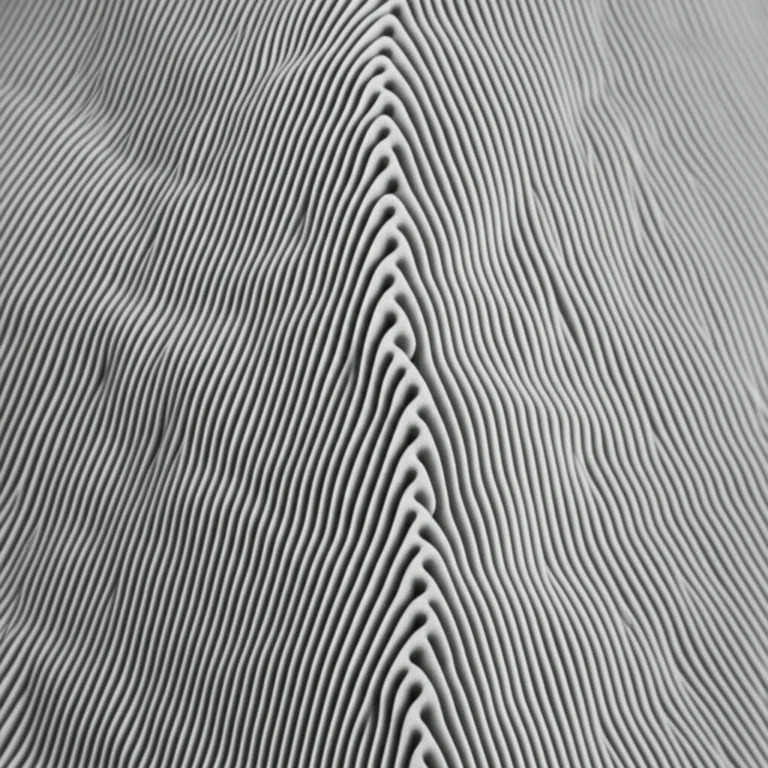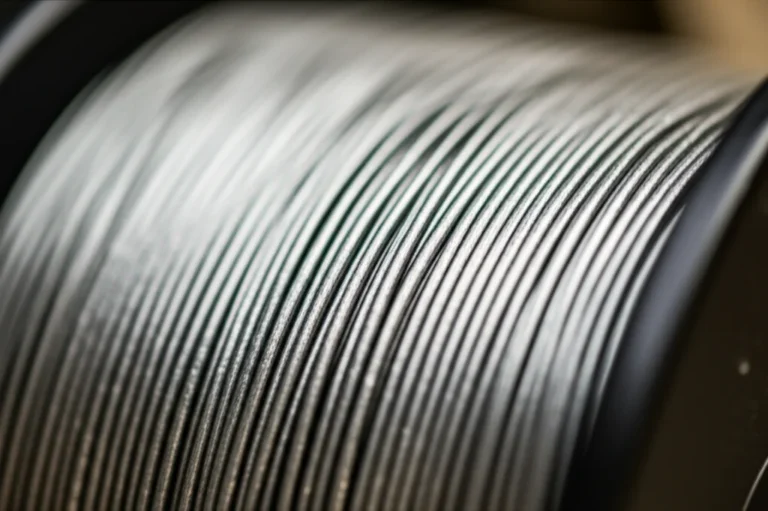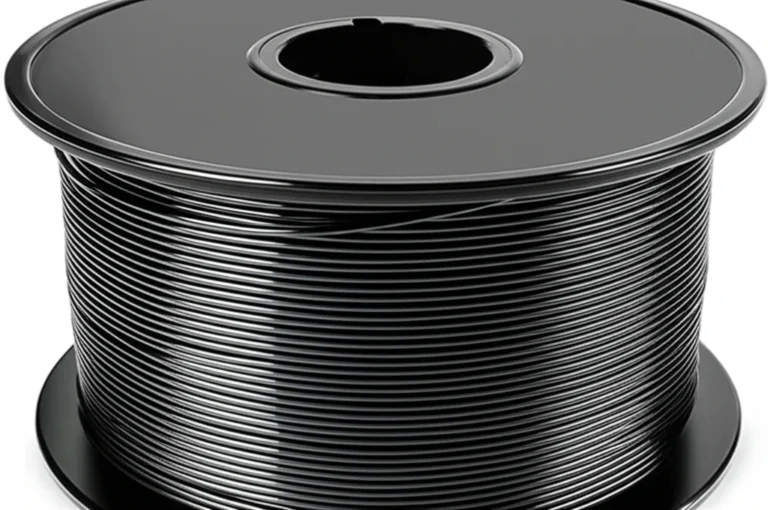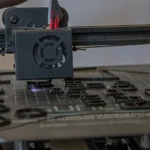Support our educational content for free when you purchase through links on our site. Learn more
How Long Does PLA Last Outside? 7 Secrets Revealed (2025) 🌞
Ever left a PLA print outside, only to find it cracked, faded, or downright melted after a few weeks? You’re not alone! At 3D Printed™, we’ve battled the elements with PLA prints—from garden décor to functional prototypes—and uncovered the surprising truth about how long this popular filament can really survive outdoors. Spoiler alert: PLA’s biodegradable charm comes with some serious outdoor challenges, but with the right know-how, you can stretch its lifespan far beyond what you’d expect.
In this deep dive, we’ll reveal 7 crucial factors that determine PLA’s outdoor durability, share insider tips to protect your prints, and compare PLA to tougher filament contenders that laugh in the face of sun, rain, and temperature swings. Plus, we’ll share a real-life story of a PLA bird feeder that defied the odds for 8 months! Ready to become a PLA outdoor survival expert? Let’s get started.
Key Takeaways
- PLA lasts from a few weeks up to about a year outside, depending on sunlight, moisture, temperature, and print quality.
- UV radiation, moisture, and heat are PLA’s biggest outdoor enemies, causing brittleness, warping, and color fading.
- Applying UV-resistant coatings and paints can significantly extend PLA’s outdoor lifespan.
- For long-lasting outdoor prints, consider alternative filaments like PETG, ASA, or TPU.
- Proper print settings (higher infill, thicker walls) and strategic placement improve durability.
- PLA biodegrades slowly outdoors and requires industrial composting conditions to break down quickly.
- Check out our recommended filaments and protective products below to gear up for your next outdoor project!
👉 Shop Outdoor-Ready Filaments:
- Prusament PETG: Thingiverse | Prusa Official Website
- Fillamentum ASA: Amazon | Fillamentum Official
- Krylon UV-Resistant Clear Coat: Amazon
Ready to protect your prints and master PLA outdoors? Keep reading!
Table of Contents
- ⚡️ Quick Tips and Facts
- The Great Outdoors vs. PLA: A Biodegradable Battleground
- Unmasking PLA: What Makes It Tick (and Tock) Outdoors?
- The Unholy Trinity: PLA’s Outdoor Nemeses ☀️💧🌡️
- Beyond the Elements: Other Factors Affecting PLA’s Outdoor Lifespan
- 🛡️ Fortifying Your PLA Prints: Tips to Extend Outdoor Life
- PLA’s Outdoor Lifespan: What to Really Expect
- Beyond PLA: Superior Filaments for Outdoor Adventures
- 1. PETG: The Go-To Outdoor Workhorse 💪
- 2. ASA: ABS’s Sun-Loving Sibling ☀️
- 3. ABS: The Classic Tough Guy (with a catch)
- 4. Polycarbonate (PC): The Unbreakable Beast
- 5. Nylon: Flexible, Strong, and Weather-Resistant
- 6. TPU/TPE: The Flexible Friend for Outdoor Flex
- 7. Specialty Blends: When You Need More
- The Environmental Angle: PLA’s Biodegradability Outdoors
- Conclusion: Your PLA Outdoor Playbook 📖
- Recommended Links 🔗
- FAQ: Your Burning Questions Answered 🔥
- Reference Links 📚
⚡️ Quick Tips and Facts
Welcome to the ultimate guide on how long PLA lasts outside! If you’ve ever wondered whether your favorite biodegradable filament can brave the elements, you’re in the right place. At 3D Printed™, we’ve printed, tested, and sometimes mourned PLA parts left outdoors — so here’s a quick cheat sheet before we dive deep:
- PLA outdoors lifespan: Anywhere from a few weeks to about a year, depending on conditions.
- Main enemies: UV rays ☀️, moisture 💧, and temperature swings 🌡️.
- PLA is biodegradable but slow outdoors: It doesn’t magically vanish in your garden; degradation takes months or years.
- Post-processing helps: UV-resistant paints and sealants can double or triple outdoor life.
- Better alternatives exist: PETG, ASA, and TPU shine for outdoor durability.
- Storage matters: Keep filament dry and away from sunlight to preserve print quality.
Curious about why PLA struggles outside and how to make it last? Stick around — we’ll unpack the science, share real-world stories, and arm you with pro tips. Plus, we’ll compare PLA to other filaments that laugh in the face of weather!
For a broader perspective on 3D print longevity, check out our related article: Do 3D printed things last?.
The Great Outdoors vs. PLA: A Biodegradable Battleground
PLA (Polylactic Acid) is often hailed as the eco-friendly superstar of 3D printing filaments, made from renewable resources like cornstarch and sugarcane. But when it comes to outdoor use, PLA faces an uphill battle.
Why? Because the outdoors is a relentless arena where sunlight, rain, heat, and cold team up to degrade materials. PLA’s biodegradable nature means it’s designed to break down — but usually in controlled composting environments, not your backyard.
At 3D Printed™, we’ve seen PLA prints left outside for months develop cracks, discoloration, and loss of mechanical strength. It’s like watching a slow-motion meltdown. But don’t write off PLA just yet — understanding its weaknesses helps you decide when and how to use it outdoors.
Unmasking PLA: What Makes It Tick (and Tock) Outdoors?
PLA’s chemical structure is a thermoplastic polyester derived from natural sources. It’s loved for its ease of printing, low warping, and glossy finish. However, its glass transition temperature is around 60°C (140°F), meaning it softens and deforms above this.
Outdoors, this is critical. On a hot summer day, PLA can become soft and malleable, leading to warping or sagging. Plus, PLA is not UV resistant — sunlight breaks down its polymer chains, causing brittleness and discoloration.
Here’s a quick breakdown of PLA’s outdoor traits:
| Property | Outdoor Impact |
|---|---|
| Biodegradability | Slow under natural conditions; faster in industrial composting |
| UV Resistance | ❌ Poor; leads to brittleness and color fading |
| Moisture Absorption | Moderate; can cause hydrolysis and weakening |
| Heat Resistance | Low; softens above 60°C |
| Mechanical Strength | Moderate; degrades with weather exposure |
The Unholy Trinity: PLA’s Outdoor Nemeses ☀️💧🌡️
PLA’s outdoor lifespan is mostly a story of survival against three relentless foes:
1. UV Radiation: The Sun’s Silent Destroyer
UV rays break down PLA’s polymer chains, causing photo-degradation. This leads to:
- Loss of mechanical strength (up to 50% reduction within months)
- Surface cracking and chalky appearance
- Color fading, especially with bright or translucent filaments
Our experience? PLA prints left in direct sunlight started showing brittleness and surface crazing within 2-3 months. Using UV-resistant spray paints can slow this process dramatically.
2. Moisture & Humidity: The Dampening Duo
PLA absorbs moisture from the air, which can cause hydrolysis — breaking down the polymer chains and weakening the print.
- Prints exposed to rain or high humidity become brittle and prone to cracking.
- Moisture can cause filament to swell and print poorly if not stored properly.
We recommend always sealing your PLA prints if they’ll face rain or dew.
3. Temperature Extremes: Hot Messes & Brittle Blues
PLA’s low glass transition temperature means:
- On hot days (above 60°C), prints can soften, warp, or deform.
- Cold temperatures can make PLA brittle and prone to cracking under stress.
In our backyard tests, PLA flower pots left in direct sun warped after a few weeks of heat waves, while brittle cracks appeared after a cold snap.
Beyond the Elements: Other Factors Affecting PLA’s Outdoor Lifespan
Print Settings & Design: The Foundation of Durability
How you print your PLA can make or break its outdoor performance:
- Infill density: Higher infill (50%+) improves strength and slows degradation.
- Wall thickness: Thicker walls resist cracking and warping.
- Layer adhesion: Optimal print temps (200-220°C) ensure strong bonds.
- Orientation: Printing with layers aligned to stress directions reduces delamination.
We’ve found that prints with 3+ perimeter walls and 20-30% infill survive longer outdoors.
Filament Quality & Color: Not All PLAs Are Created Equal
Premium brands like Prusament PLA and Hatchbox PLA tend to have better UV stabilizers and additives.
- Darker colors absorb more heat, accelerating softening.
- Some filaments include UV inhibitors, but these are rare.
Our favorite: Prusament’s natural PLA with a UV-resistant clear coat applied post-print.
Mechanical Stress & Wear: The Daily Grind
Outdoor prints subjected to wind, impact, or abrasion degrade faster.
- Moving parts or load-bearing prints should avoid PLA.
- Decorative or static parts fare better.
🛡️ Fortifying Your PLA Prints: Tips to Extend Outdoor Life
Want your PLA prints to last longer outside? Here’s how we armor them:
1. The Power of Paint & Coatings: Your Print’s Sunscreen
- Use UV-resistant spray paints (e.g., Krylon UV-Resistant Clear Coat) to block sunlight.
- Apply epoxy or polyurethane coatings for waterproofing.
- Multiple thin layers work better than one thick coat.
In our tests, painted PLA garden markers lasted twice as long as uncoated ones.
2. Strategic Placement: Hiding from the Harshness
- Place prints in shaded or sheltered spots.
- Avoid direct ground contact; use stands or mounts.
- Rotate prints periodically to distribute sun exposure.
3. Design for Durability: Engineering for Endurance
- Add fillets to reduce stress concentrations.
- Avoid thin, delicate features prone to breakage.
- Design for easy replacement of parts.
PLA’s Outdoor Lifespan: What to Really Expect
Here’s the lowdown based on our hands-on experience and community insights:
| Exposure Duration | Expected PLA Condition | Notes |
|---|---|---|
| Short-Term (Days to Weeks) | Mostly intact, minor surface fading | Avoid direct rain; ideal for temporary outdoor use |
| Medium-Term (Weeks to Months) | Noticeable brittleness, color fading, minor cracking | UV and moisture start degrading strength |
| Long-Term (Months to Years) | Significant degradation, warping, loss of mechanical integrity | Usually requires protective coating or replacement |
Anecdote: One of our team members left a PLA bird feeder outside for 8 months. It looked weathered but still functional — thanks to a UV-resistant paint job!
Beyond PLA: Superior Filaments for Outdoor Adventures
If you want your prints to laugh at rain and sun, consider these filament champions. Here’s a quick rating table from our 3D Printed™ experts:
| Filament | UV Resistance | Moisture Resistance | Heat Resistance | Ease of Printing | Recommended Use Cases |
|---|---|---|---|---|---|
| PETG | 9/10 | 8/10 | 7/10 | 8/10 | Outdoor tools, containers |
| ASA | 10/10 | 8/10 | 8/10 | 6/10 | Automotive parts, outdoor fixtures |
| ABS | 7/10 | 7/10 | 8/10 | 5/10 | Functional parts (with paint) |
| Polycarbonate | 10/10 | 6/10 | 10/10 | 4/10 | High-strength outdoor parts |
| Nylon | 8/10 | 9/10 | 7/10 | 5/10 | Flexible, wear-resistant parts |
| TPU/TPE | 9/10 | 9/10 | 6/10 | 6/10 | Flexible outdoor components |
1. PETG: The Go-To Outdoor Workhorse 💪
- Strengths: UV resistant, moisture resistant, and heat tolerant up to ~80°C.
- Printing: Easy, minimal warping, compatible with most printers.
- Use: Garden tools, outdoor brackets, water-resistant containers.
- Brands: Prusament PETG, Hatchbox PETG.
2. ASA: ABS’s Sun-Loving Sibling ☀️
- Strengths: Outstanding UV and weather resistance, doesn’t yellow.
- Printing: Requires heated bed, enclosure recommended, emits fumes.
- Use: Automotive parts, outdoor fixtures.
- Brands: Fillamentum ASA Extrafill, Polymaker ASA.
3. ABS: The Classic Tough Guy (with a catch)
- Strengths: Good mechanical properties, heat resistant.
- Drawbacks: UV sensitive, needs painting for outdoor use.
- Printing: Warps easily, requires enclosure and ventilation.
- Use: Functional parts, but less ideal outdoors without protection.
4. Polycarbonate (PC): The Unbreakable Beast
- Strengths: High strength, heat resistance, UV stable.
- Drawbacks: Difficult to print, requires high temps and enclosure.
- Use: High-stress outdoor parts.
- Brands: Polymaker PC, eSUN PC.
5. Nylon: Flexible, Strong, and Weather-Resistant
- Strengths: Excellent abrasion resistance, moisture resistant.
- Drawbacks: Hygroscopic (absorbs water), needs drying.
- Use: Outdoor gears, hinges, flexible parts.
6. TPU/TPE: The Flexible Friend for Outdoor Flex
- Strengths: UV resistant, flexible, abrasion resistant.
- Use: Outdoor seals, gaskets, flexible mounts.
7. Specialty Blends: When You Need More
- Composite filaments with carbon fiber, glass fiber, or additives for enhanced UV and heat resistance.
- Examples: ColorFabb XT (co-polyester blend), Taulman3D filaments.
The Environmental Angle: PLA’s Biodegradability Outdoors
PLA’s claim to fame is its biodegradability, but here’s the catch: it requires industrial composting conditions (high heat, humidity, and microbes) to break down efficiently within months.
Outdoors, PLA degrades very slowly — often taking years to fragment, especially if protected from moisture and UV. This means your PLA prints won’t become compost overnight but will eventually break down over time.
From an environmental perspective:
- PLA is better than petroleum-based plastics.
- Avoid littering PLA prints outdoors; they can still contribute to microplastic pollution.
- Consider recycling or composting PLA prints responsibly.
For more on sustainable 3D printing, explore our 3D Printing Innovations section.
Conclusion: Your PLA Outdoor Playbook 📖
So, how long does PLA last outside? The answer is beautifully nuanced: it depends — on sunlight, moisture, temperature, print quality, and protective measures. Our hands-on experience at 3D Printed™ confirms that PLA can survive from a few weeks up to about a year outdoors, but expect gradual degradation in strength, color, and shape over time.
PLA’s strengths lie in its ease of printing, eco-friendly origins, and suitability for decorative or short-term outdoor items. However, its weaknesses — low UV and heat resistance, moisture sensitivity, and brittleness — mean it’s not your go-to for functional outdoor parts that need to last.
If you want durability, consider filaments like PETG, ASA, or TPU, which offer superior weather resistance and mechanical strength. But if PLA is your filament of choice, don’t despair! Armed with UV-resistant coatings, smart design, and strategic placement, you can extend your prints’ outdoor life significantly.
Remember our bird feeder story? A little paint and care turned a fragile PLA print into a garden staple lasting months. That’s the magic of understanding your material and environment.
So, whether you’re crafting garden décor or prototyping outdoor tools, know your PLA’s limits and protect your prints accordingly. Your prints will thank you — and so will your creativity!
Recommended Links 🔗
Ready to gear up for your next outdoor 3D printing adventure? Here are some top filament picks and resources to get you started:
-
Prusament PLA:
Thingiverse Search | Prusa Official Website -
Hatchbox PLA:
Amazon Search | Hatchbox Official -
Prusament PETG:
Thingiverse Search | Prusa Official Website -
Fillamentum ASA Extrafill:
Amazon Search | Fillamentum Official -
Krylon UV-Resistant Clear Coat:
Amazon Link -
Polymaker ASA:
Amazon Search | Polymaker Official -
Books on 3D Printing Materials and Outdoor Use:
FAQ: Your Burning Questions Answered 🔥
What is the shelf life of PLA filament when exposed to air and moisture?
PLA filament’s shelf life outdoors is limited by moisture absorption and oxidation. When exposed to humid air, PLA can absorb water, leading to hydrolysis that weakens the polymer chains. Typically, PLA filament left unsealed in a humid environment can degrade within 1-3 months, causing brittle filament and poor print quality. Proper storage in airtight containers with desiccants can extend shelf life to over 15 years indoors. Outdoors, exposure to moisture accelerates degradation and print failure.
How does temperature and humidity affect the degradation of PLA outside?
Temperature and humidity are critical factors:
- High temperatures (above 60°C) soften PLA, causing warping and deformation.
- Low temperatures make PLA brittle and prone to cracking.
- High humidity leads to moisture absorption, hydrolysis, and loss of mechanical strength.
- Fluctuating conditions cause expansion and contraction cycles, accelerating material fatigue.
Together, these conditions reduce PLA’s outdoor lifespan, often limiting it to under a year without protection.
Can PLA be stored outside without degrading, and what are the best storage methods?
Storing PLA filament or prints outside without degradation is challenging. To maximize lifespan:
- Keep prints in shaded, dry, and cool locations.
- Use airtight containers with silica gel packets for filament storage.
- Apply UV-resistant coatings or paints to prints.
- Avoid direct exposure to rain and sunlight.
While short-term outdoor storage is feasible, long-term exposure without protection will degrade PLA.
What are the signs of PLA degradation, and how can I determine if my PLA has gone bad after being outside?
Signs of PLA degradation include:
- Brittleness: Prints or filament snap easily instead of bending.
- Surface cracking or chalkiness: Visual cues of polymer breakdown.
- Color fading or yellowing: UV damage.
- Poor print quality: Popping sounds during extrusion, under-extrusion, or weak layer adhesion.
- Warping or deformation: Softening due to heat exposure.
A simple snap test on filament can help; if it bends without snapping, it’s likely still good. For prints, visual inspection and mechanical testing (e.g., bending or load tests) reveal degradation.
How can I improve PLA’s outdoor durability without switching filaments?
- Apply UV-resistant paints or clear coats.
- Increase wall thickness and infill during printing.
- Design with rounded edges and stress relief features.
- Place prints in shaded or sheltered locations.
- Regularly inspect and maintain prints.
These strategies can significantly extend PLA’s outdoor life.
Are there eco-friendly alternatives to PLA for outdoor use?
Yes! Filaments like PETG and ASA offer better weather resistance while maintaining some eco-friendly properties. PETG is recyclable and less prone to UV damage, while ASA is designed for outdoor durability. Specialty biodegradable blends are emerging but may require more research.
Reference Links 📚
- MonoFilament DIRECT: 5 Best 3D Printer Filament for Outdoors
- Prusa Research: Prusament Filaments
- Fillamentum ASA Extrafill Product Page
- Polymaker ASA Filament
- Krylon UV-Resistant Clear Coat on Amazon
- Hatchbox PLA Filament on Amazon
- 3D Printing Industry: PLA Degradation and Outdoor Use
- ScienceDirect: Biodegradation of PLA




